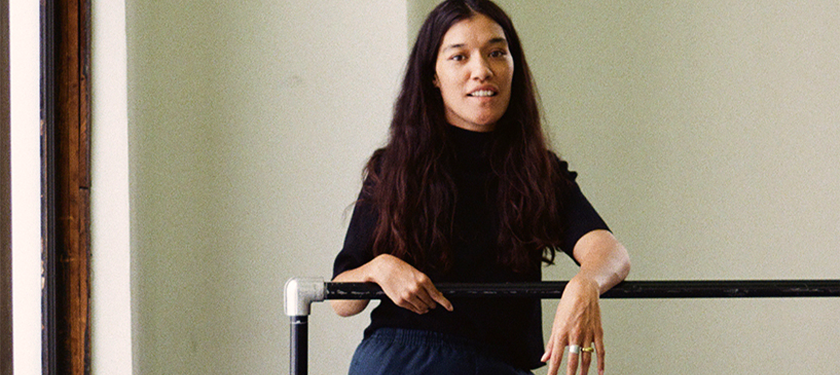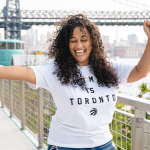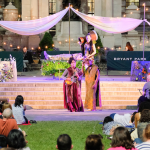Business of Art | Strategies for Submitting A Strong Performing Arts Application
What you need to know before submitting your next application, from interdisciplinary artist Pelenakeke Brown.
Pelenakeke Brown, also known as Keke Brown, is a Samoan/Pakeha disabled artist from Aotearoa (New Zealand) whose interdisciplinary practice spans visual arts, writing, and performance. During her six and a half years living in New York City, Brown participated in projects hosted by The Metropolitan Museum of Art, New York Public Library for the Performing Arts, Dance/NYC, and more. She was also a mentee in the Immigrant Artist Mentoring Program (IAP) Socially Engaged Practice in 2016 and a mentor in IAP Performing and Literary Arts in 2019. Brown has recently returned to Aotearoa, where she is currently the Artistic Director at Touch Compass, a disability-led performance company.
NYFA recently asked Brown to talk about her successful trajectory and share tips for best approaching performance applications. Keep reading to learn more about where to spot opportunities, what kinds of application materials you should always have at hand, and more.
“Breaking up the labor of trawling through the internet searching sites that list opportunities helps me forecast the year and not feel overwhelmed.”
NYFA: What are the typical types of application opportunities out there for performing artists? Can you tell us about your own experience in applying for different opportunities and what strategies work best for you?
Pelenakeke Brown: It’s really hard to keep up with all the opportunities and that can be overwhelming. It’s an administrative task that takes time from creating away from you, but unfortunately it is necessary. I have my own spreadsheet that tracks upcoming application opportunities. It is a yearly spreadsheet and every three months I dedicate a couple of hours to searching for and logging those opportunities—when they are due, link to apply, any info I think I need to know when scanning the spreadsheet such as a letter of support, if it’s paid, if I applied for it, and the result. Breaking up the labor of trawling through the internet, searching sites that list opportunities (especially when I’m in the mood for it) helps me forecast the year and not feel overwhelmed.
I don’t apply for everything either. Sometimes I add opportunities that sound incredible, but I know I’m not at that stage in my practice yet, but I think I might apply next year. Every year I duplicate the spreadsheet so that those opportunities are already there and I know roughly when they are due. I also might apply to an opportunity that I’m not quite at that stage but I use the application as a time to scope and think about where my practice is headed, figuring out ideas I might be interested in developing later.
“Every artist needs an internet presence.”
NYFA: What are the key materials a performance artist should have prepared at all times? Are there any platforms/channels that are particularly important for performing artists to be on?
PB: You need to have an up to date CV, bio (100 words and longer), an artist statement (one in first person and another in third person), some photos of documentation, and some video documentation if possible. I update these things regularly, like every three months, and again do it all in one chunk. I try to make sure I update my website at the same time so that all public channels say the same thing and have the most up to date info.
Every artist needs an internet presence. It doesn’t have to be a website—some artists I know solely use Instagram—but you do need a way of people finding you and contacting you for upcoming gigs.
“I definitely think joining groups or fellowships that give you a cohort helped me meet new people and network.”
NYFA: What do you recommend for beginners that wish to build up their CVs? Can you tell us a bit about your trajectory in the industry?
PB: When I began, it was about creating networks and as someone not from New York City that was really important. I joined groups such as NYFA’s Immigrant Artist Mentoring Program to meet other artists and figure out ways of working as well as making friends. I supported friends and applied for many more opportunities than was feasible, but I used these applications as a way to figure out my practice. If I had to write an artist statement, I used that as an opportunity to understand what my art is about. I said “yes” to most things whereas now I am more comfortable with saying “no” and have created rules such as not applying for things that are unpaid or that you have to pay to apply to. I don’t think you have to say “yes” to everything, but for me it helped me learn on the go and naturally meant I was introduced to new organizations and places to present my work.
NYFA: Where do you find opportunities? Do you have any networking tips to share?
PB: I’m on some alumni listserves, and building in admin time to read and research the industry helped me build up a wide knowledge of art opportunities across the arts sector. I definitely think joining groups or fellowships that give you a cohort helped me meet new people and network. I have also been very very lucky to meet lots of people who have been willing to help me by writing letters of support, etc.
– Interview conducted by Luiza Teixeira-Vesey, Designer/Marketing Officer
You can find more articles on arts career topics by visiting the Business of Art section of NYFA’s website. Learn more about NYFA Immigrant Artist Mentoring Program and subscribe to the IAP Newsletter, a free monthly e-mail with artist’s features, opportunities, and events.





